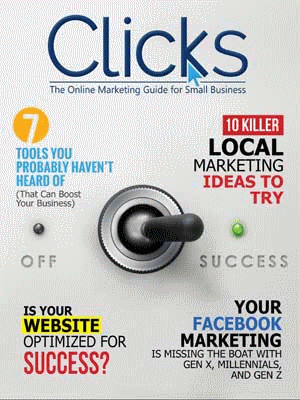Sound dramatic? Maybe it is. But the truth is that it’s getting more and more difficult to stay on top of the shifting tides of SEO. Google’s updates its algorithm regularly and doesn’t share the changes – and if you want your website to stay visible and maintain its rank, you’ve got to be ready to move with the current.
So, with that in mind, here are the biggest SEO trends of 2019 as I see them – and some tips about how to use them to your advantage.
Voice Search

I’m starting with a big one that many small and medium-sized companies are still ignoring. Voice search isn’t going anywhere – and in fact, it’s going to become increasingly important in 2019.
Why? Because pretty much all of us are using voice search in some way. Whether you’re starting a mobile search by saying “OK Google” or calling on Alexa, Cortana, or Siri to help you find what you need, you’re using voice search. And, estimates are that 50% of all searches will be voice searches by next year.
And guess what? That means your customers are too. One of the best ways to capitalize on this trend is to optimize your site with voice search in mind. That means incorporating common questions into your content – because your customers are asking questions and your website should answer them.
Mobile-First Indexing
Google’s mobile-first indexing is still relatively new, but only a fool would believe that it won’t increase in importance in 2019. Right now, about 60% of all searches are mobile – and that number’s only going to go up.
How do you take advantage of this trend? First, make sure your site is mobile responsive. Honestly, at this point there’s no excuse for it not to be. Next, think about how your site’s design will impact mobile users. You want a clean design that’s easy to use. That means single column next, right-sized buttons, and other mobile features like direct dialing.
You may also want to think about accepting mobile payments in your store, if you have one. The idea is to make it easy for mobile customers to patronize your business.
Structured Data
SEO is in an interesting place right now. We’re still heavily mobile-dependent, but the increase in voice searches and use of artificial intelligence means that we all need to be thinking about how our websites can be easy to access as AI increases in importance.
One way to do that is to use Schema and other structures to organize your data. Things like information architecture, tags, metadata, and structured mark-up can all help ensure that your site is easy to crawl and index.
I know that all sounds very technical, but an experienced SEO can help you navigate the tech requirements while still providing a site that’s user-friendly, readable, and engaging.

SEO is no longer just about what’s on your website. It’s also about how people are talking about you on social media sites and other places online – and those brand mentions are now having a big impact on how Google perceives your company.
If you’re not already tracking your social mentions, now is the time to start doing it. Following other brands on social media will reveal that some of them are responding when people mention them – and they’re making a big impact doing it. Even a word of encouragement or a quick joke can make a huge difference in how people think of you. Awario is a great tool for tracking your mentions.
Focus on Expertise, Authority, and Trustworthiness
The big trio of online impact is E-A-T – Expertise, Authority, and Trustworthiness. Technically, E-A-T isn’t part of Google’s algorithm, but it is a guideline for Google’s algorithm raters. That means that you can’t afford to ignore it.
What you can do to offer E-A-T to your site’s visitors is provide content that’s:
- Meaningful
- Useful
- Relevant
- Authoritative
- Deep
You don’t need to write 5,000 word blog posts. However, it is very helpful to cover the topics that are in your area of expertise in depth. If a topic is too big or complex for a single blog post, do a series of posts (or a series of videos) to cover it.
You can demonstrate E-A-T by creating a system of internal links to help visitors to your site navigate the information that’s available and easily find content that’s related to what they’re viewing.
Site Speed
Speed is another topic you may think I’ve covered too much – but when I repeat myself, it’s only because I know how important it is and I want to make sure that you’re not overlooking something that can have a huge impact on your SEO.
There’s no such thing as a website that loads too quickly. All web users are impatient and mobile users are more impatient than most. Very few are going to wait longer than five or six seconds for your site to load. Anything that might be slowing your site down needs to go. That means:
- Auto play audio and video
- Flash
- Outdated plug-ins
You can and should use Google’s PageSpeed Insights to check your site’s loading speed. Then, do whatever you need to update it and speed it up, so that users don’t need to think about the time it takes your site to load – because they’ll already be looking at your awesome content.




